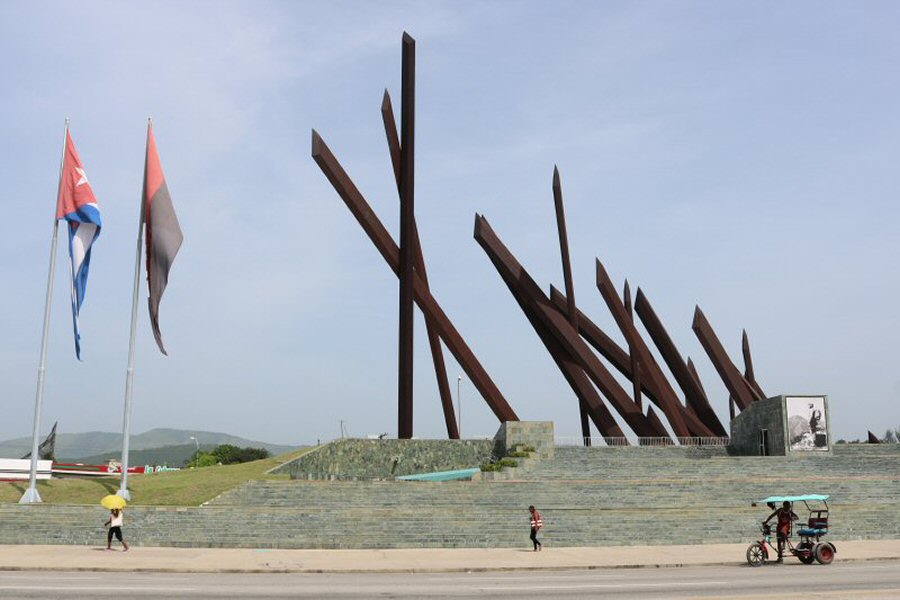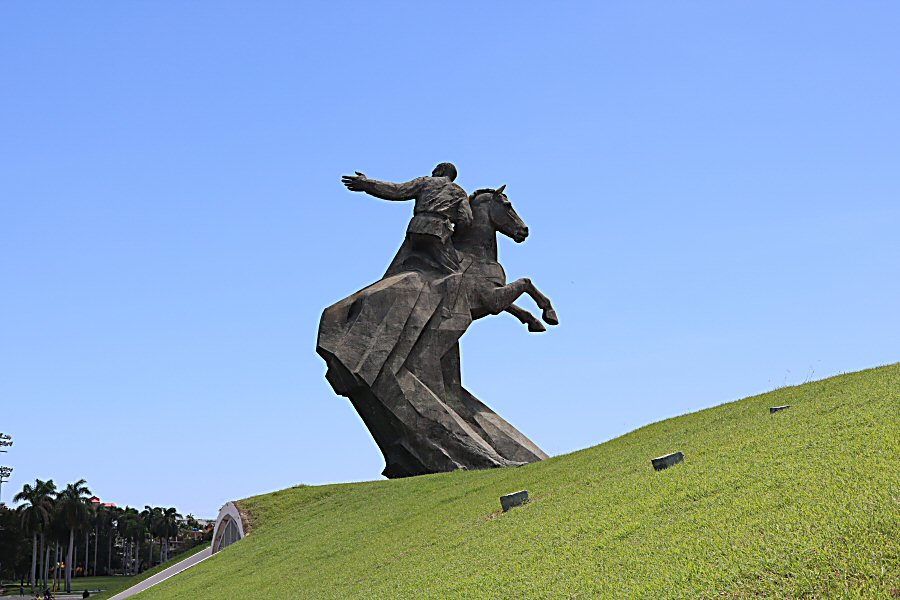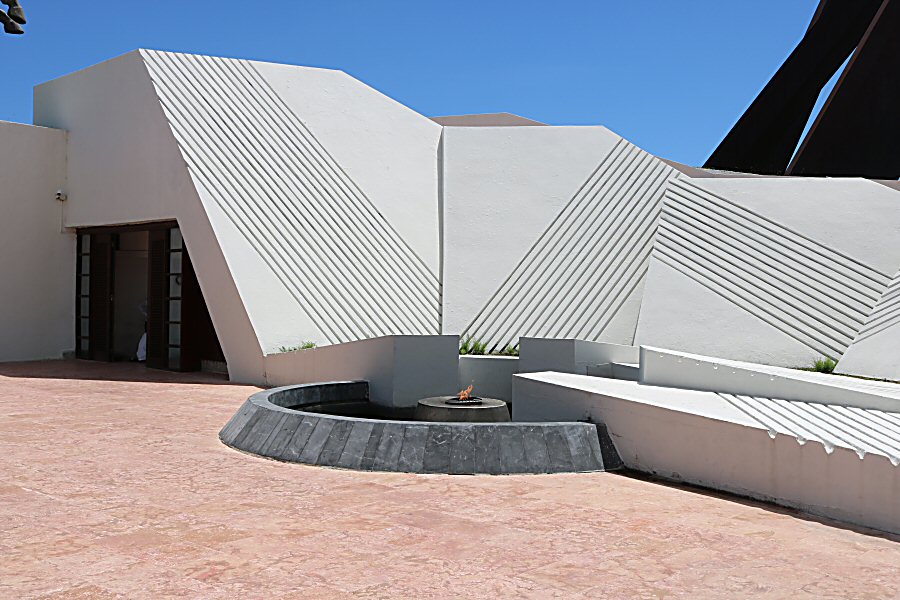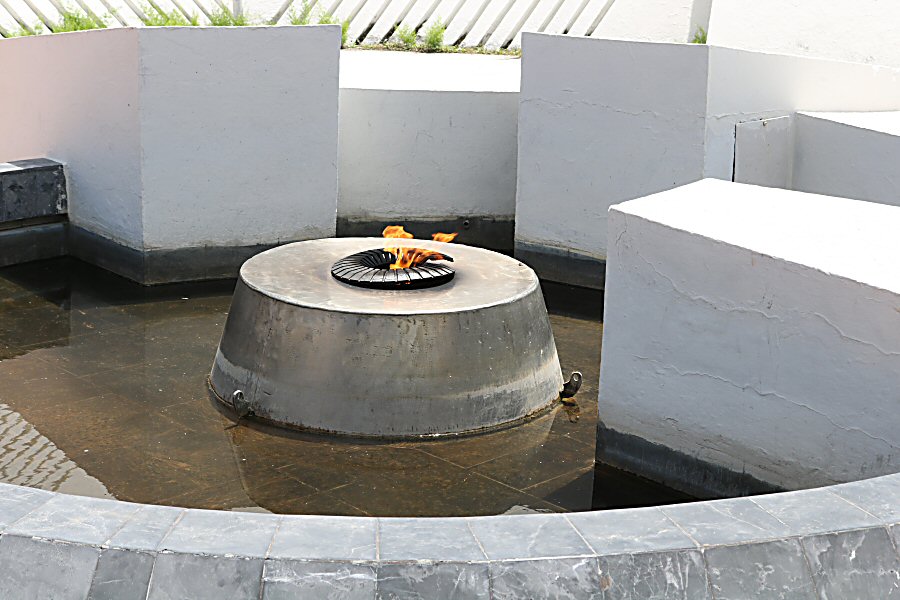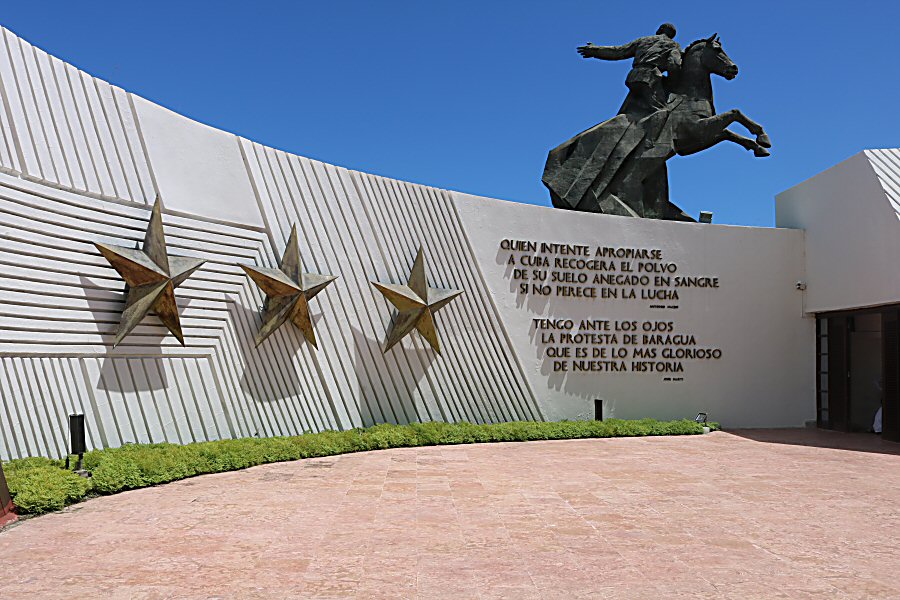Plaza de la Revolución is at the junction of Avenida de las Américas with Avenida de Los Libertadores.
Museum: Tuesday - Saturday 09:00 - 17:00
Sunday 09:00 - 13:00
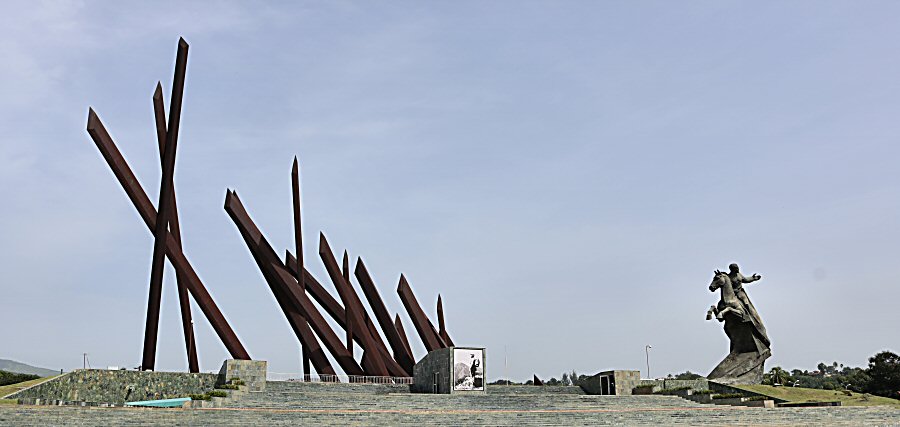

This big square that occupies an area
of about 53.000 m2, has a trapezoidal configuration
where two fundamental areas stand out: first, dedicated to the
meeting place, and the other one that comprises the monumental
complex. The meeting place is a large area with a capacity for
approximately 150.000 people. It is covered by granite
pavestones in gray, green and red.
Although it is popularly known as
Plaza de la Revolución, its official name is Plaza de la
Revolución Mayor General Antonio Maceo Grajales.
José Antonio de la Caridad Maceo y
Grajales (1845 - 1896), the prestigious Major General of the
Liberation Army, was considered a master in the use of military
tactics. He was a combatant par excellence. As a tireless
warrior, it is estimated that he participated in more than 600
combats of different magnitude, including around 200 combats of
great significance. His body was marked by 26 war scars, 21 of
which he received in Ten Years War.
The monumental complex stands on a
marble plateau. It is comprised of the staircase-tribune in that
2.000 people can meet, the sculptural set and the enclosure of
the eternal flame. The sculptural set includes the equestrian
figure of Major General Antonio Maceo Grajales and the 23
metallic elements. The gargantuan statue is the work of the
sculptor Alberto Lescay Merencio. It was made of 430 pieces of
bronze that were produced by the casting technique. It is the
highest statue erected in the whole Cuba, reaching 16 m in
height. It has an approximate weight of 90 tons.
The 23 metallic elements, suggesting
gigantic machetes, are serving as a supplementary backdrop to
the statue of Maceo. They are the work of the santiaguero
sculptor Guarionex Ferrer. These artistic forms, made of steel,
conceptually refers to the spirit of the well-known protest of
Baragua (Protesta de Baraguá) in 1878, the date on which the
fight against the Spanish colonialism was reinitiated. Their
alignment reflects the invasion of the island from east to west.
The number 23 symbolizes the date of Protesta de Baraguá (March
23, 1878).
The eternal flame in front of the
entrance of the museum was constructed in memory of the martyrs
and represents the spirit of the rebellion displayed by Maceo in
Baraguá. The flame becomes more expressive by its reflection on
the water surface, giving the sensation of a continuous
movement.
Under the artificial hill there are
several rooms, including the exhibition hall and the protocol
rooms. The museum can be accessed through the entrance on the
back of the complex, where Avenida Las Americas meets Camino de
la Ceiba.
Fragments of documents, photographs,
maps, and reproductions of the drawings of historical events in
that Maceo assumed the main action, are exhibited throughout the
permanent exhibition hall, offering a vision of the hero. The
exhibition hall is equipped with hologram that presents various
personnel objects of Maceo. There is also an electronic model
that shows the 26 bullet wounds that Bronze Titan Maceo received
during the battles.
Plaza de la Revolución is inaugurated
in 1991 by Fidel Castro Ruz. After the death of Fidel
Castro, his ashes were passed through the city by a convoy, and
after a travel of 16 km (the number of cars departing from
Granjita Siboney for Moncada assault) his ashes rested in Plaza
de la Revolución for one night before his burial on December 4,
2016.
